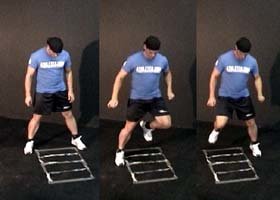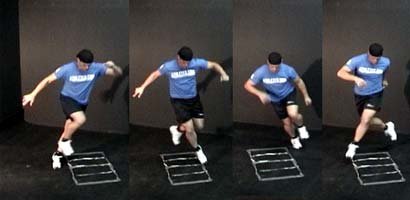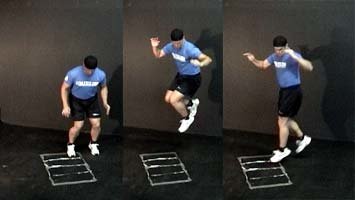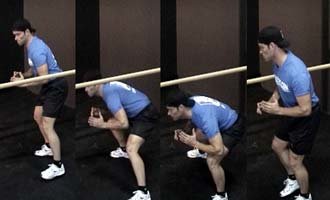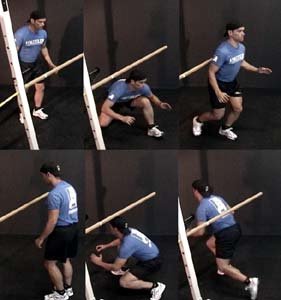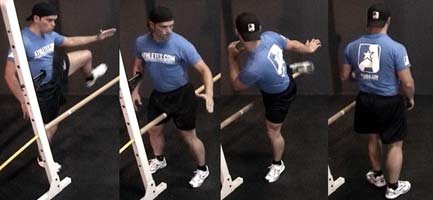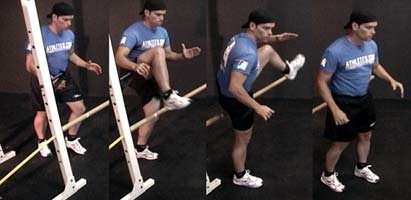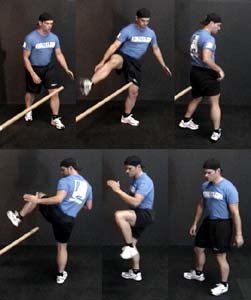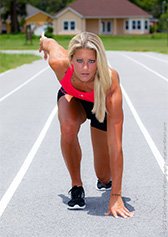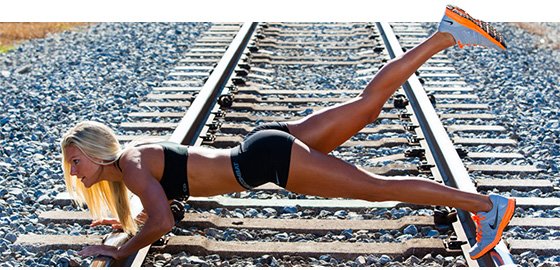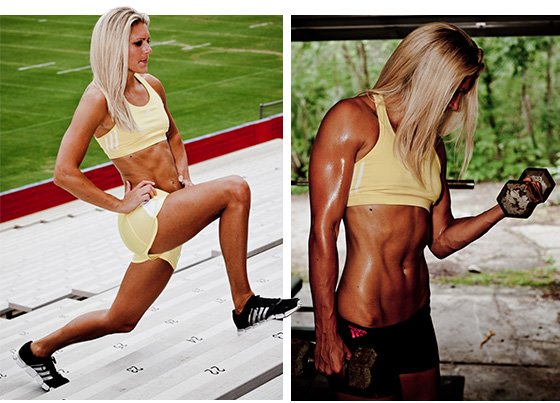The Eastern Connecticut Conference boys' basketball finals live from Mohegan Sun Arena.
6:00 p.m. - St. Bernard vs. Plainfield
8:00 p.m. - Norwich Free Academy vs. Ledyard
(All Times EST)
6:00 p.m. - St. Bernard vs. Plainfield
8:00 p.m. - Norwich Free Academy vs. Ledyard
(All Times EST)
Using Fitness To Increase Basketball Performance: Smart Moves For Training!
Whether
you're a recreational basketball player or playing for your school,
using fitness to improve your performance is smart. Here are some great
exercises and workouts to build your skills for greater success on the
court.
| Article Summary:
|
Many people, when thinking of fitness, tend to think of time spent on the treadmills, weight machines, or on the ab mats doing crunches. Unfortunately, this is skewed thinking because many exercises that you can perform in the fitness and weight room will have a direct transfer over to how well you do on the court.
By incorporating some smart fitness movements into your training program, you will really see increases in your durability, jumping, and striking skills during the game. Here is what to consider.

Training For Basketball

 Pylon Runs:
Pylon Runs: 
-
Being able to weave in and out around players is going to be one of
the most successful skills you need in basketball in order to be
successful. When you've got the ball, endorphins will be at an all time
high and there will be many players coming after you.
Unless you're able to successfully maneuver your direction around
these players quickly, you will be stopped and likely lose control over
the ball.
To improve these skills, place a series of pylons staggered across an empty gym or field. Once set-up, run through them going to one end and then back again.
 |
Pylon: A pylon is another name for a cone-shaped marker. A Pair Of Pylons. |
 |
 |
||
-
There are many variations on this exercise you can do here including
going to one pylon, switching directions and running back, going to the
second pylon, switching directions and then running back, and so on in
that fashion until you have completed all the pylons.
Another option, which also helps make this exercise much more basketball
specific, is to also work on dribbling the basketball through the
pylons while doing the exercise. This will help you improve your ability
to maintain control over the ball, increasing your ability to withstand
players trying to get in your pathway.
 Wall Bounds:
Wall Bounds: 
-
Next up, the next exercise that would be a good addition to your
program are wall bounds. These will help increase your jumping ability,
allowing you to rebound off the ground more effectively to make the jump
shots that are necessary during the game.
To perform these, stand about 3 sets back from a wall. Then, take
one and a half steps forward, rebounding off the foot that is standing
on the last step, reaching as far up on the wall as possible.
Note that you can do this off one leg or two legs. Two legs will allow you to jump higher and will also work coordination slightly more, while rebounding off one leg will increase your leg power in the single leg and will really enhance fast-twitch muscle fiber recruitment.
 Jump Squat-Basketball Shoot:
Jump Squat-Basketball Shoot: 
-
To up the intensity of the regular jump squat and make it more
basketball specific, this is what you'll do. Holding a basketball in
your hands at about the same level that you would use to shoot it with,
bend down, and move into the full squat position. From there, rebound
upwards, jumping off the floor as high as you can.
While doing so, proceed to shoot the ball outwards to a partner who
is standing a few feet away and will catch the ball. This throwing
action while you are in mid-air will help to throw you off balance
slightly, working your ability and stabilization skills as you come back
down to the ground.
As you land, have your partner pass the ball back down to you, and try and grab a hold of it as you move back down into the squat position.
 Explosive Bench Press:
Explosive Bench Press: 
-
To work on your shooting explosiveness, you'll want to develop strong
chest and tricep muscles, as these are the primary movers when going to
shoot the ball.
The twist you're going to put on this exercise however is when
going through the push-through motion, you'll want to try pushing the
weight upwards as quickly as possible. Once you're at the top of the
movement, pause for a second and then lower the weight to the chest
slowly to a count of three.
Doing the movement in this fashion will help you work on your driving force, which should help you propel the basketball faster through the air, making it harder for your opponents to stop.
 Side Twisting Abdominal Strengthener:
Side Twisting Abdominal Strengthener: 
-
Another element that you'll need to preferably develop is your ability to control twisting motion as it comes at you. Lack of
flexibility in the core area as well as weak core muscles will make you more susceptible to
injuries, as well as it will make passing off the ball to other players when you need to in a twisted movement pattern a lot harder.
To increase your skill level in this respect, place a weighted bar
behind your head, balanced over your shoulders as if you were going to
do a squat position.
From there, while holding onto the bar with your hands, begin twisting slowly to one direction, pause, and then twist back to the other side.
This exercise will not seem all that difficult to perform, however the key is in keeping the bar under control and increasing the range of motion with which you are able to comfortable twist to each side.

Sample Workout Routine

So, keep all of these ideas in mind as you go about creating your basketball workout program. Also remember that because basketball is a sport that's going to utilize many anaerobic processes and plyometric movements, you'll really want to pay attention to your total volume to ensure that you aren't doing more than the body can effectively handle.
Recovery from your workouts will be critical to progress, so when in doubt opt for the less is more philosophy. Here is a sample workout routine you could start implementing in your program to see progress in the right direction.
 Warm-Up:
Warm-Up: 
-
Running down the court - run to each of the following points, turn
around, and then run back to the start before going to the next
distance:
- 1/4 mark
- 1/2 mark
- 3/4 mark
- Full
 Agility Component:
Agility Component: 
-
The purpose of this portion of the workout is to build up your
reaction time as well as enhance your ability to maintain control
despite other players trying to block you.
- Pylon run without a basketball, running as quickly as possible through the pylons
- Pylon run with the basketball, working on maintaining control the entire time
- Front pylon run with backwards jog back to start
 Strength Component:
Strength Component: 
| READING THIS WORKOUT LOG | |
|
-
The primary
goal of
the strength component is to build up your strength like any other
workout, but also to enhance your explosiveness through the tempo that's
utilized. You should be performing this workout 2-3 times a week, with
one day off in between each session.
- Barbell Squat: 2 sets of 6-8 reps, tempo 2:1:1
- Barbell Bench Press: 2 sets of 6-8 reps, tempo 3:1:1
- Stiff-Leg Deadlift: 2 sets of 8-10 reps, tempo 2:1:2
- Seated Cable Row: 2 sets of 8-10 reps, tempo 2:0:3
- Shoulder Press: 2 sets of 8-10 reps, tempo 2:1:2
 Click Here For A Printable Log Of Strength Component.
Click Here For A Printable Log Of Strength Component.  Plyometric Component:
Plyometric Component: 
-
The
plyometric portion of this workout will help increase your rebounding abilities, making jump shots more effective on the court.
- Wall Bounds: 2 sets of 6 reps
- Jump Squat-Basketball Shoot: 2 sets of 8 reps
- Side Twisting Abdominal Strengthener: 2 sets of 10 reps
 Click Here For A Printable Log Of Plyometric Component.
Click Here For A Printable Log Of Plyometric Component.  Cool-Down:
Cool-Down: 
-
Finally, to round off the workout, you'll want to perform some
stretches
for your hamstrings, hip flexors, as well as the shoulder joints to
loosen up the muscles that typically can become tense after hours spent
on the court.
Be sure to hold each stretch for a good 20-30 seconds each time you do it so you can ensure you're getting maximum benefits.



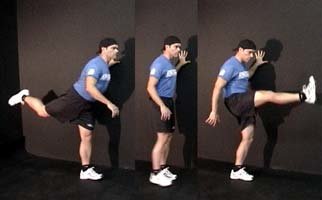
 Click To Enlarge.
Click To Enlarge.
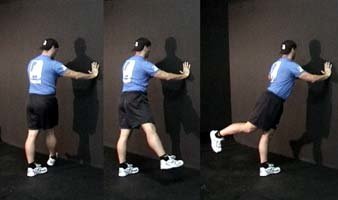
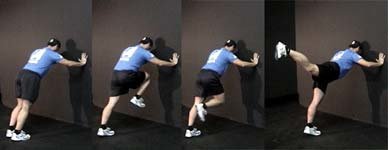
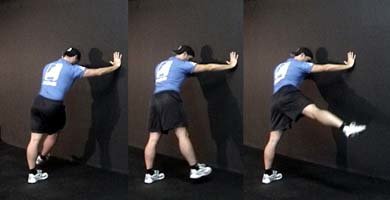
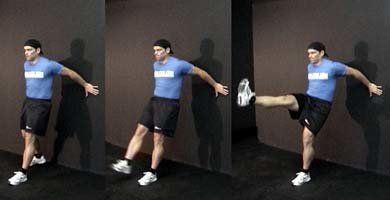
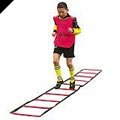 If you don't have a speed ladder, make your own. First, draw two parallel lines on the ground approximately 18 inches apart.
If you don't have a speed ladder, make your own. First, draw two parallel lines on the ground approximately 18 inches apart. 